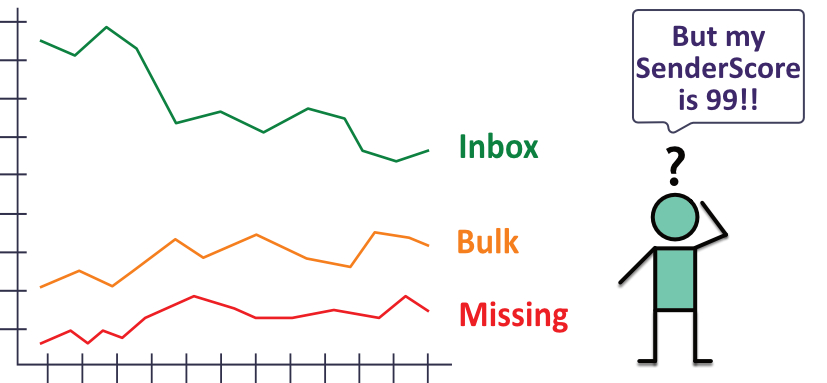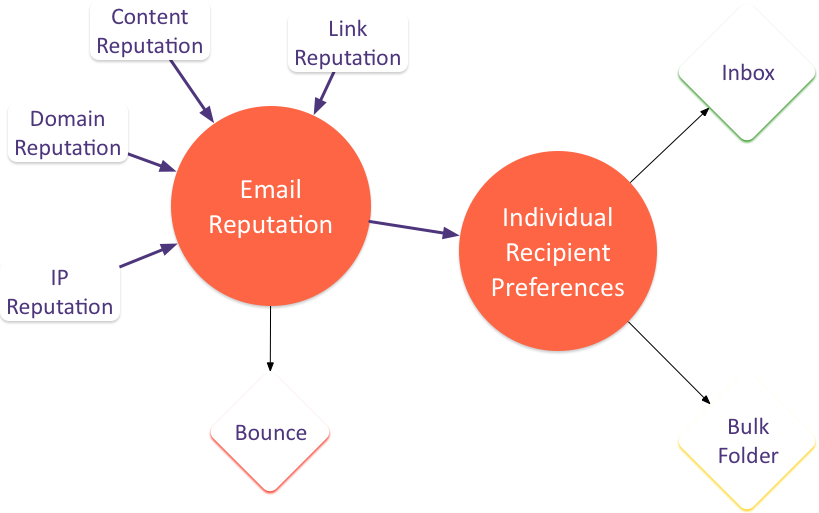Thoughts on SenderScore
Kevin Senne posted over on the Oracle blog about how we need to stop caring about SenderScore and why it’s not as useful a metric as it used to be.
I can’t argue with anything he’s said. I think there is way too much focus on IP reputation and SenderScore. There’s so much more to deliverability than just one or two factors.
In fact, if you’ve been to any of my recent webinars or talks you will probably have seen some version of this image in my slides:
Basically, just because you have a great SenderScore doesn’t mean you’re going to have good delivery. Likewise, having a poor SenderScore doesn’t mean your mail is destined to be undelivered.
I tell clients, and people who ask about SenderScore that it reflects the data that Return Path gets, run through their proprietary algorithms to come up with a score. And that score is relevant for those ISPs that pay attention to it. But most ISPs make the deliver or not deliver decision based on their own internal data, not on the IPs SenderScore.
What’s more important for deliverability is the email reputation. Email reputation combines content reputation, link reputation, IP reputation and sender reputation into one score. Emails with poor reputation are often blocked during the SMTP transaction. After mail is accepted it goes through the personalized filters and then it’s delivered to the inbox or the bulk folder.
Filters are complex. I’m not ready to give up any available data, including the SenderScore, when troubleshooting delivery problems for my clients. But I also don’t work to fix a client’s SenderScore. I work to fix a client’s deliverability. Sometimes that improvement is shown in SenderScore improvements. Sometimes it’s not.